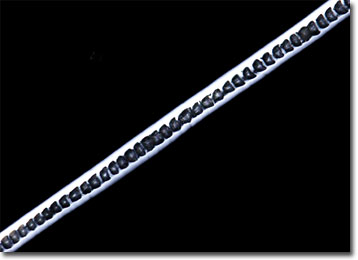Polarized Light Microscopy Digital Image Gallery
Groundhog Hair
Groundhogs, also known as woodchucks, are a species of large marmots found in North America. In the United States, these hibernating creatures are the focal point of a holiday celebrated on February 2, when they are said to emerge from their burrows in search of their shadows so that they may determine whether or not spring is coming soon.

View a second image of Groundhog Hair
The modern Groundhog Day celebration, which is centered in Pennsylvania on Punxsutawney Phil, has its roots in a variety of cultural customs that signified the importance of the early days of February, which fall approximately midway between the winter solstice and spring equinox. According to Celtic tradition, for instance, this occasion was observed as Imbolc, a festivity held in honor of the goddess Brigid and the approaching return of the revitalizing forces of spring. The more direct association between the emergence of animals from their dens at this time and the prognostication of weather, however, is generally believed to have developed in Europe sometime in the Middle Ages and was brought to North America by German immigrants, many of which settled in Pennsylvania during the late nineteenth century.
When they are not hibernating, groundhogs spend significant amounts of time eating, especially succulent grasses, building up fat reserves to last them through the long winter. The stout animals, which are usually about two feet long when including the tail, generally achieve their highest body mass in late August, weighing in at as many as 13 pounds. Despite their corpulence, however, groundhog meat is rarely eaten by humans although it is considered edible. Moreover, their grayish-brown pelts have never been very popular in the fur trade, although the hides of groundhogs were sometimes used by Native Americans as sturdy moccasin soles.
